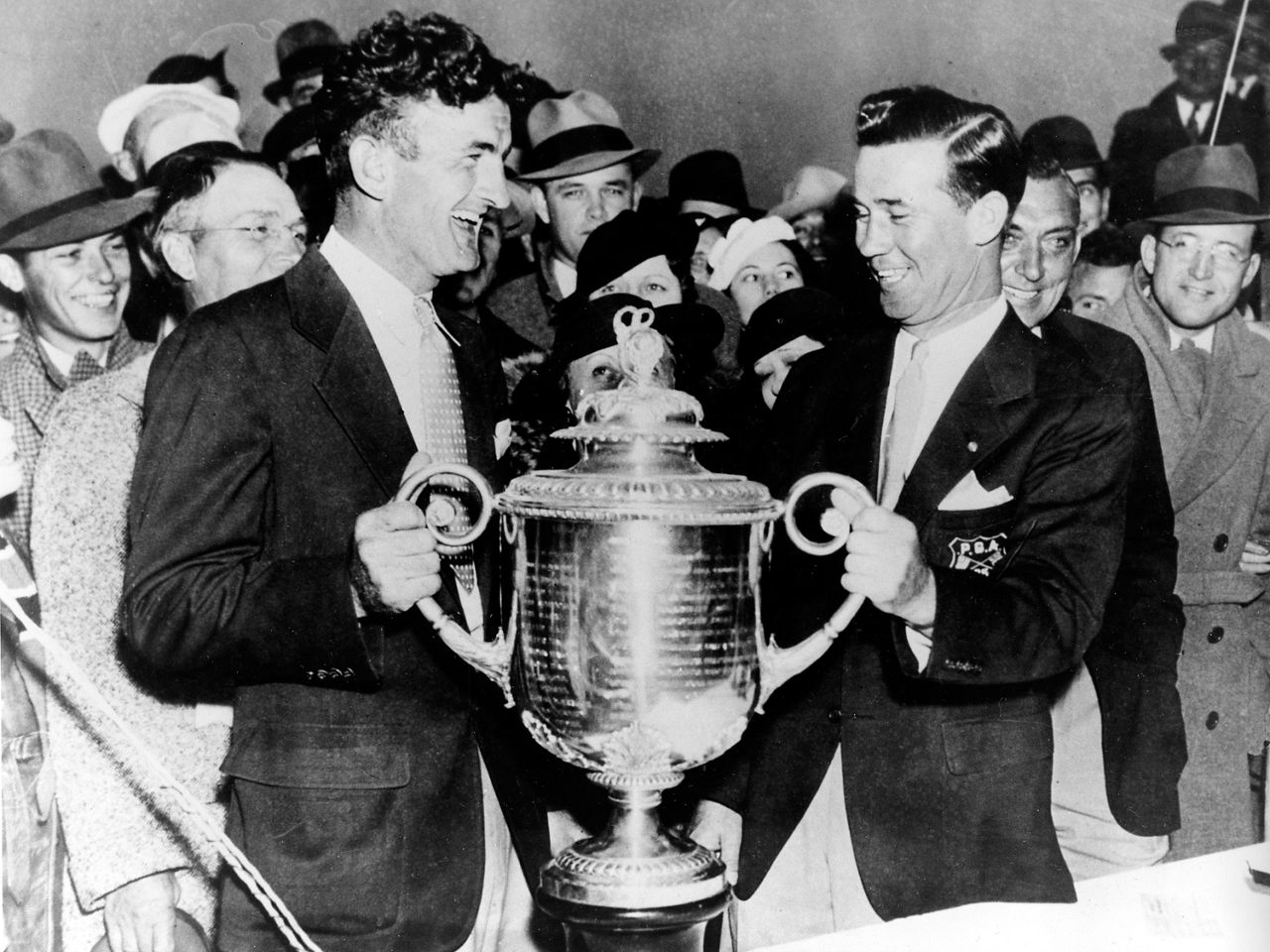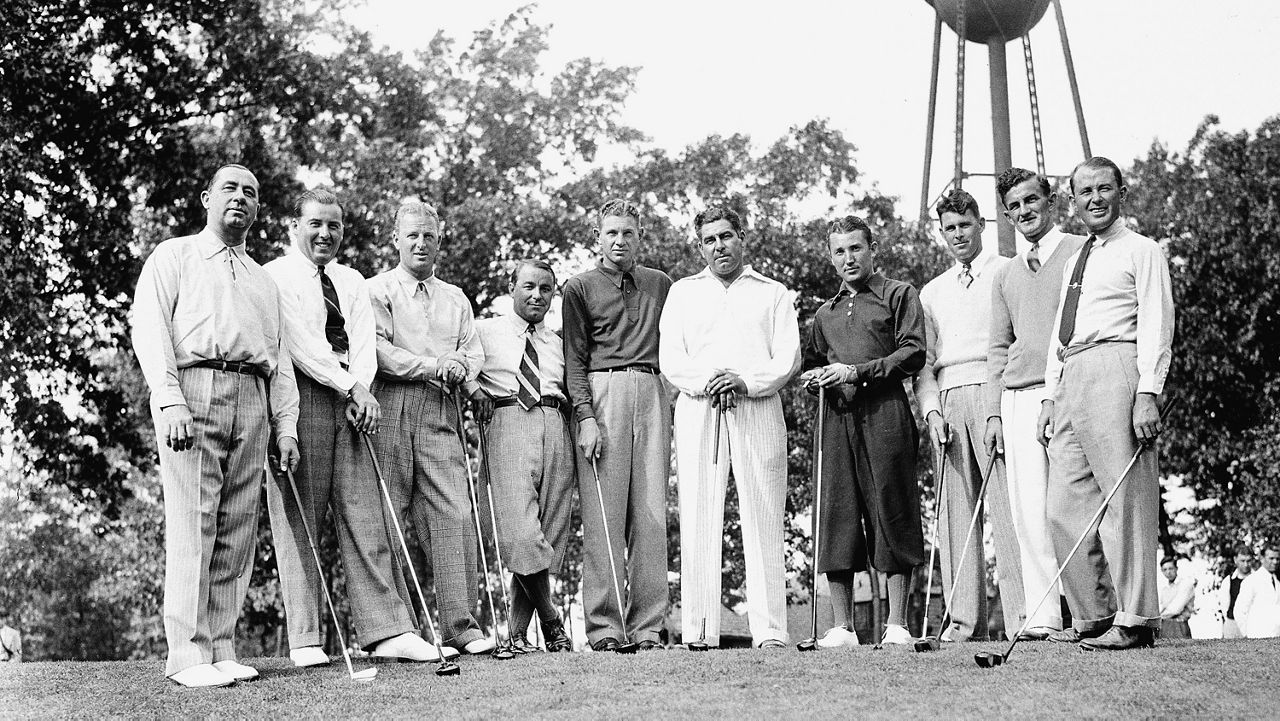He was arguably the most successful player from Wisconsin to tee it up in the Ryder Cup and no doubt the least heralded.
Remember Johnny Revolta?
Unless you’re an uber-fan of Wisconsin golf history or remember the year when Disney first introduced Donald Duck to the world, then you probably don’t.
But first, let’s clear the air on a technicality. Johnny Revolta is not a Wisconsin native. He was born in St. Louis and didn’t make his way to Oshkosh until he was 12 when his father moved the family, so he could have steady work with the Paine Lumber Company. But Oshkosh is where he was first introduced to the game, learned the game and developed the skills that would make him one of the top players of his era.
When the Revoltas arrived in Oshkosh, they settled into a two-story house on Maple Street, and from his second-story window, young Johnny could watch the happenings across the street at Lakeshore Golf Course. There were men carrying bags, with sticks, slashing at rubber golf balls and then chasing after them. He was intrigued.
So, one day, he finally worked up the courage to walk across the street and introduced himself to Lakeshore’s head pro, Hank Detlaff, who looked at this young lad and inquired if he would like to be a caddie. Revolta said no thanks, because he didn’t know how.
Undeterred, Revolta kept showing up at the golf course, and Detlaff took the time to teach him about the game. Then, as legend has it, the time came when Detlaff placed a ball in the bunker and handed a club to Revolta, who with one swing successfully extricated the ball from the sand.
This may be pure folklore, or it merely was a prelude to a natural skill that would one day lead to Revolta being called “The Iron Master” for his short-game prowess.
Revolta did not begin with a set of clubs, rather a club; a 5-iron. It came about when Revolta was caddying, a poor shot was hit, the club was immediately punished and thrown against a tree, and Revolta went and retrieved it after the round. The shaft was broken, so Revolta’s mom gave him a broom handle, Johnny whittled it down, and he was on his way.
In just two short years, the kid who had never held a golf club in his hand before he came to Oshkosh won the Wisconsin State Caddie championship at 14. Two years after that, his game and reputation had reached the point where a sponsor took him to the U.S. Amateur in Minneapolis. Another player in the field was the legendary Bobby Jones, and Revolta spent a portion of each day watching Jones hit balls on the range. He watched and he learned. It was time well spent.
When Revolta returned to Oshkosh, it would be another of the city’s lumber barons, James Henry Wall, who would play an important role in Revolta’s career. Wall had a daughter, Bernice, who was a golf protégé in her own right, and he was determined to help her any way he could. So, he brought her south during the winter months to work on her game. It is believed he brought Revolta along as well, helped him get a job as a locker room attendant and part-time course ranger at the St. Petersburg Country Club in St. Petersburg, Fla., then watched the 17-year-old win the 1928 New Year’s Invitational, which remains the largest and most prestigious amateur event in the south, now in its 96th year.
Along the way, the Walls – Bernice was elected to the Wisconsin State Golf Association Hall of Fame in 2001 – crossed paths with Gene Sarazen and Walter Hagen, two of professional golf’s biggest stars. Wall invited the two to Oshkosh to play at the Oshkosh Country Club, where Wall was a member. It wasn’t long after when Sarazen and Hagen became frequent guests in Oshkosh, and they even brought a couple of their friends along, Ben Hogen and Byron Nelson.
They came often enough that Wall eventually built apartments behind his home – which is now the Christine Ann Domestic Abuse Center – and they became known as the “Hagen Apartments.”
Because professional golf was a tough way to make a living back in the 1930s, even for the game’s biggest stars, it would not be uncommon for them to barnstorm across the country and play exhibition matches, sometimes taking on the local talent in a match for money.
When Wall’s famous guests would be in town, he would invite Revolta to play against them. But that didn’t last long, for they quickly realized Revolta would not be opening his wallet very often.
It was that kind of talent that Revolta showed as an amateur – he also won the Wisconsin State Open in back-to-back years in 1930-31 and four times in a six-year stretch —that had his friends telling him he should turn pro. And so, in 1933, at the age of 22, Revolta did just that. His first PGA event was the Miami Baltimore, and he finished second. In his next PGA event, the Miami Open, he won by eight shots.
The very next year, Revolta won four times and also played in the first-ever Masters Tournament, where he finished tied for 18th.
Then came 1935, when the name Johnny Revolta was mentioned in the same breath as Jones, Hagen, Sarazen, Hogan and Nelson. He won five times that year, including his first and only major – the PGA Championship – and led the PGA Tour money list with $9,543. He also won the Western Open, which at the time, was considered a major championship. He finished the year by going 2-0 in the Ryder Cup, captained by none other than the guy he used to play matches against at the Oshkosh Country Club, Walter Hagen.
It was his victory in the PGA Championship – played as a match play event at that time – that truly catapulted his career. He beat Hagen 1-up in his opening match, where he made seven sand saves along the way. Then in the 36-hole final against three-time major winner Tommy Armor, he one-putted 13 times in a 5 and 4 victory. At 24, Johnny Revolta was a major champion.

And it was that short game – first honed at the former Lakeshore Municipal Golf Course in Oshkosh – that earned him the nickname “The Iron Master.”
In 1937 Revolta earned another Ryder Cup berth under Hagen, helping the U.S. to what would be the second of seven straight victories in the biennial event.
The Tour was interrupted by World War II beginning in 1940, but it didn’t stop Revolta from entertaining golf fans in Wisconsin.
On July 30, 1940, Revolta teamed with Ben Hogan to take on Sam Snead and Ralph Guldahl at the
Oneida Golf and Riding Club in Green Bay. Some 800 fans showed up to watch Snead shoot a course record 66 in leading his team to a 3 and 2 victory.
In his later years Revolta, who served as the head pro at Tripoli Country Club in Milwaukee from 1934-36, would become one of the most sought-out instructors by pros and amateurs alike and was also noted for his work with junior golfers, perhaps a nod to Hank Detlaff for all the time he spent with Revolta as a youth.
He finished his career with 20 PGA Tour titles, tied with Greg Norman and Hale Irwin, which ranks 35th on the all-time wins list.
Upon his death in 1991 at the age of 79, Hal Miller, who succeeded Revolta as the head pro at the Evanston (Ill.) Country Club, told the Chicago Tribune:
“You go back to the best in the game – Hogan, Snead, Armour and the rest – and John Revolta was right there with them.”
It was a remarkable career, and it all began at a municipal golf course in Oshkosh.
Story idea? You can reach Mike Woods at 920-246-6321 or at Michael.t.woods1@charter.com.



